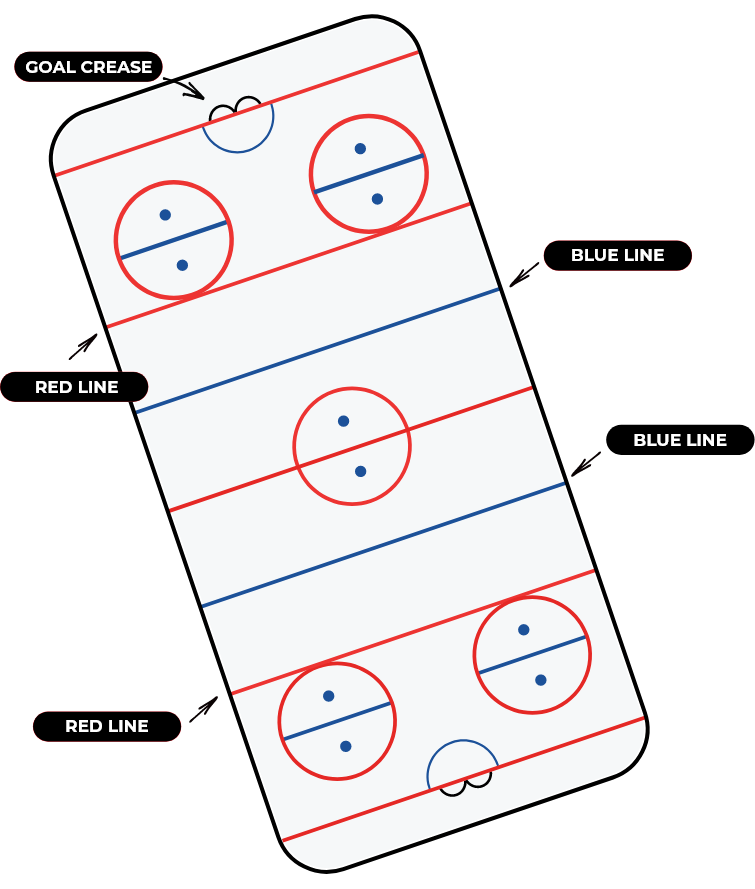Ringette Basics
Courtesy of Ringette Canada
A fast, fun and competitive team sport
The Goal
The objective of the game is to use a stick to shoot a ring into the other team’s net. The team with the most goals at the end wins.
The Players
Each team has six players on the ice: two defence, two forwards, a centre and a goalie.
How to play ringette

Ringette is played with a ring and a straight stick.
The ring is hollow and made of rubber. Sticks are not recycled hockey sticks. Companies produce sticks with tapered ends with steel, aluminum or plastic tips. Different styles, flex and weight are available.
The ring is passed at every blue line.
A player cannot carry the ring over a blue line in either direction. The ring must be passed over the blue line to another teammate. That teammate is permitted to skate ahead of the ring carrier and already be across the blue line before the ring crosses it.
Stay out of the goal crease
This is essentially a no trespassing zone that other players can't enter.
Only the goalie can play a ring that has touched or entered the goal crease. Because ringette is a game of speed, the goalie only has five seconds to pass the ring to a teammate.
Only the goalie can play a ring that has touched or entered the goal crease. Because ringette is a game of speed, the goalie only has five seconds to pass the ring to a teammate.
Players have 30 seconds to take a shot on net.
Starting at U12, Teams have 30 seconds to take a shot on goal after they gain possession of the ring. If time runs out on the shot clock, a buzzer sounds and the other team is awarded the ring.
Look out for the red lines
The red lines at the top of the circles are called free play lines. Only three players from each team are allowed in this area. Players can rotate in and out of the free play zones producing a lot of movement and creativity.
Ringette players wear protective equipment.
Players wear a neck guard, elbow, knee, and shin pads and equipment that provides hip, and tailbone protection. Helmets with full-face mask are mandatory. The masks must have triangular or tight horizontal bars to prevent the stick from penetrating.
There is no intentional body contact.
Ringette promotes a no-contact policy when it comes to the physical aspect of its game. Penalties are given when a player, makes excessive body contact with another player, checks a player too high on the stick, trips, hits or interferes another player.
